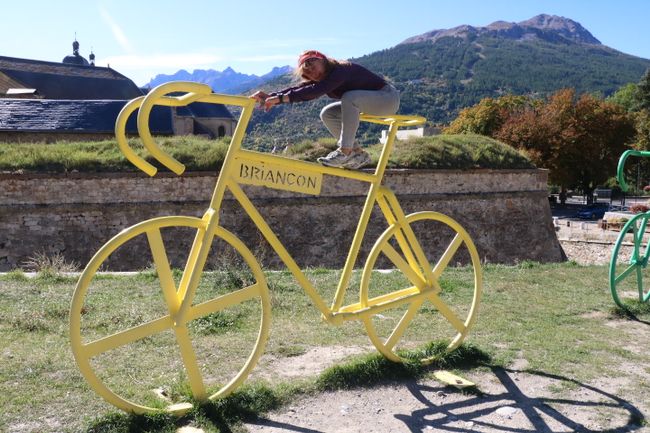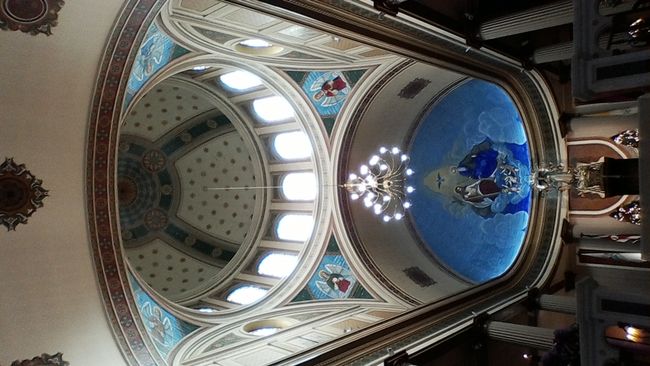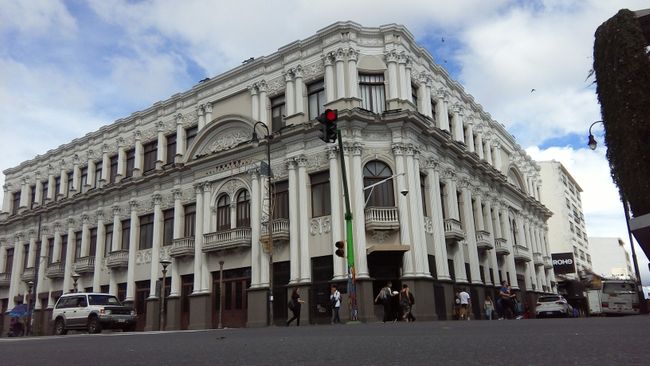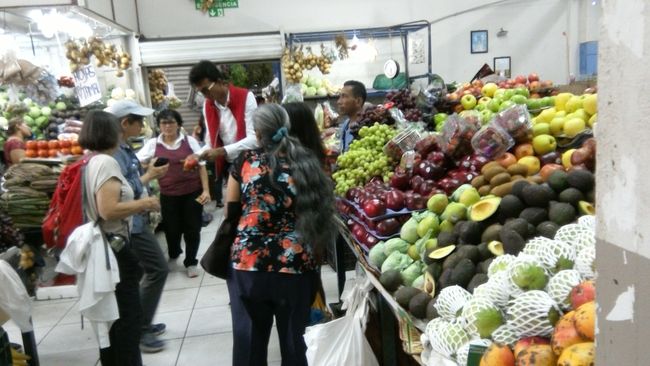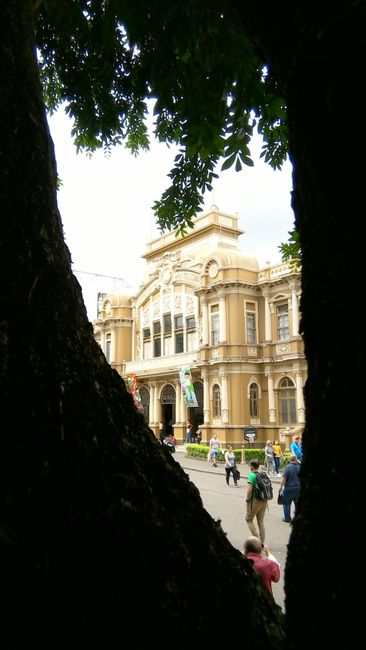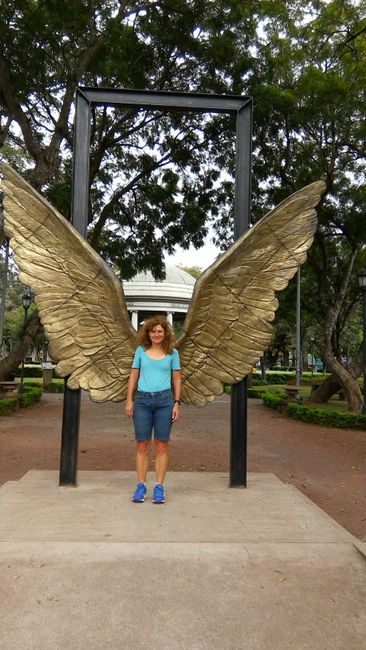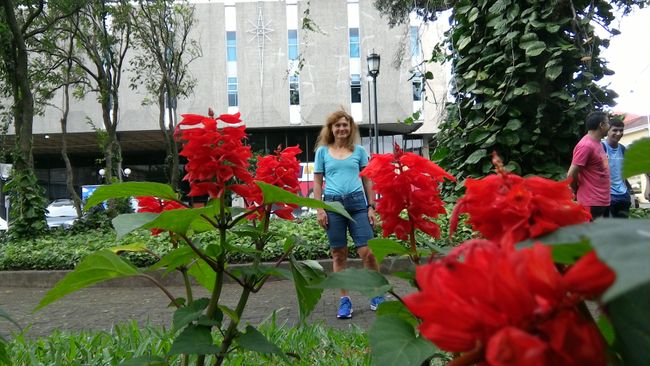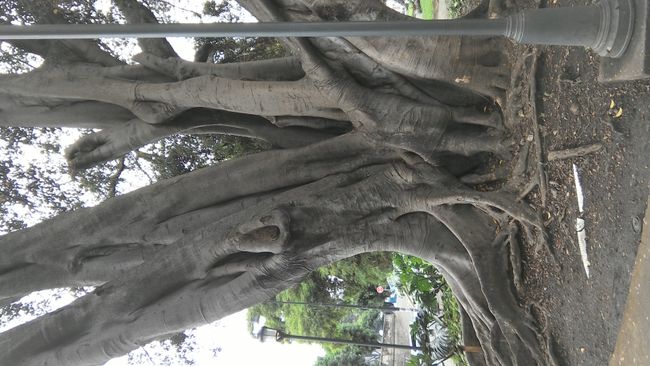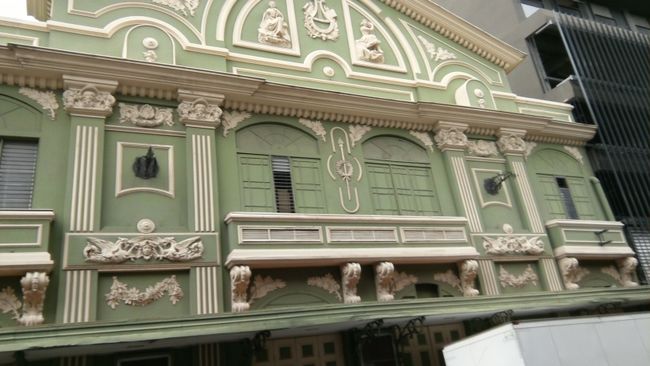24.12.2019 San Jose
Басылган: 24.12.2019
24.12.2019 San Jose
My phone definitely doesn't work anymore. On the way to the city tour, I dropped it off at a repair shop.
Very professional. I receive a pick-up slip with my name and the serial number of my Samsung. It should be ready in two hours.
Then I go on the Free Walking Tour with Esteban, whom I saw here on my first day in Costa Rica. There are five tourists following him.
Esteban explains to us that the National Theatre was initially only open to people with white skin. Later, dark-skinned residents could also enter the theater, but only if they wore decent shoes. He tells us that his family bought a pair of decent shoes and the first family member went into the theater, secretly took off the shoes and threw them out the window to the next family member so that they could enter the theater too. And so on, until the entire family was gathered. Is that true?
In the city, there are also 100 mounted video cameras with a button to directly call the police.
Esteban explains to us that Costa Rica doesn't have an army. There was a brief war with casualties and the then-president decided that he didn't want any more bloodshed. He preferred to invest the money in free healthcare, free primary and secondary education, and university education. If there were to be an attack, Costa Rica would be protected by the USA. In return, they have to assist with the marketing of McDonald's, KFC, and Starbucks here.
We go to the cathedral. Esteban is photogenic and takes great photos with different effects. He explains to us that just a few blocks away from the cathedral, to the east, west, south, and north, there is a church. We visit three of them. Esteban keeps taking great photos. There is a theater next to the cathedral, which, according to Esteban, only the dark-skinned population had access to.
We stroll through the fruit and vegetable market. We get to taste a mango. Then we continue to the Mercado Central, the central market. Here, Esteban does a little experiment. He pours good coffee from the market into a glass of water and shakes it. Nothing happens. Then he adds cheap supermarket coffee and the water turns brownish when shaken. Esteban explains that this is due to the sugar added to the cheap coffee.
After the historical part, we now move on to the natural part. We walk through parks and Esteban shows us plants and fruits. Lemongrass, the bark of a cork tree (the second lightest wood in the world), and wilberries, a type of pink cherry.
Esteban shows us his ID, and that is really interesting. The ID has a number and this number is the same number for social security, driver's license, passport, and bank account. One number for everything. Very practical.
On our way back, we also pass by the city's first cinema. Today, it is no longer in use.
Back at the National Theatre, Esteban shows us a 5-Colones note. The beautiful drawing on one side of the note has several mistakes. The coffee grows directly by the sea, although it actually thrives in high altitudes. The coffee is picked by white women, although this task was taken over by dark-skinned men. There is a streetlamp by the waterfront, although there was no electricity back then. Bananas are carried the opposite way illustrated.
Then I withdraw Colones from the ATM to pay for my phone repair. It turns out that it couldn't be repaired. The repair would take until tomorrow, but I won't be here anymore. So I take the broken phone with me again.
Then I go to a café for a meal and end the day here until the taxi picks me up at the hotel at 4pm for the airport.
.Авап

